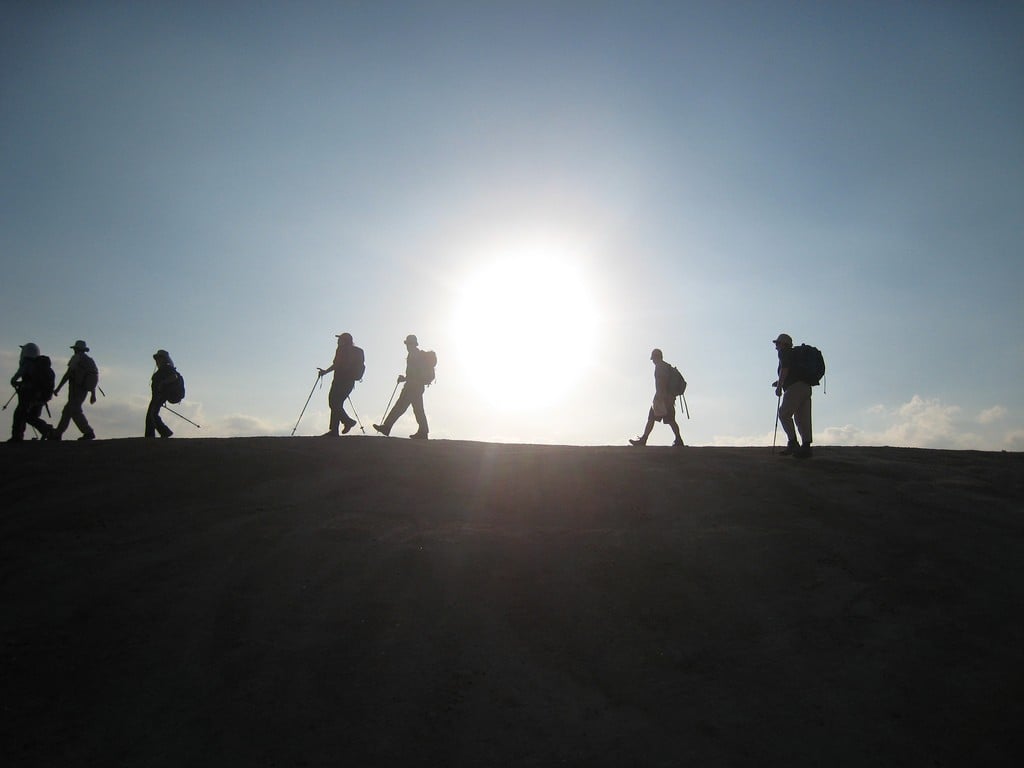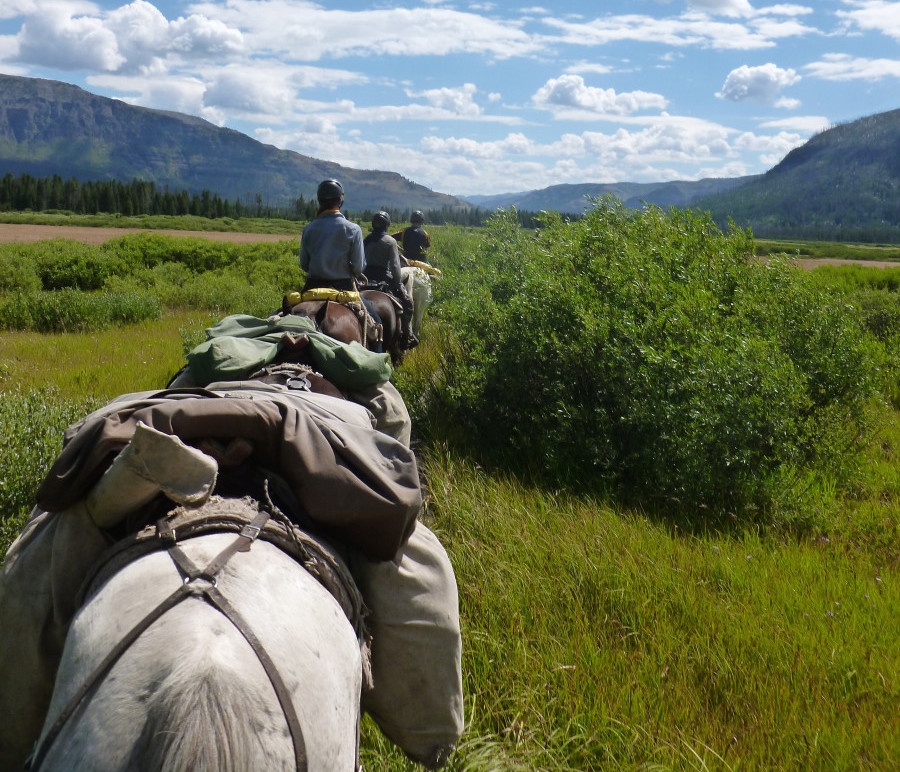
The Setting
You’re hiking a steep sidehill trail on a ridge forming the eastern border of Yellowstone National Park. Behind you are seven teenagers, your clients, and your lead instructor. Sweat drips from your forehead on a hot summer afternoon. Lost in thought, you’re paying little attention to the beautiful surroundings.
Sensing something ahead, you look up and see a black-colored bear in the middle of the trail, too close for comfort. You stop, then tumble onto the trail as the fellow behind bumps into you. Someone yells “Bear!”
Branches snap and crack as the bear bashes the underbrush in haste, heading downhill at an impressive speed. Woven into this confusion is another scream and crash. One of your participants has stepped off the trail and is rolling downhill.
You unclip your pack and move with surprising grace and speed down the hill. There is John, his roll stopped by a tree. You stabilize his spine with your hands and try to find those breaths you forgot to take. Your lead instructor, still on the trail, yells that the bear is gone.
Scene safety! Yes, of course!
Lost for a moment, you find your calm and begin the scene size-up and the initial assessment routine. You ask another student to carefully descend to the side of the patient and instruct her to maintain spine control. The slope is steep but the patient is stable in the hollow in front of the tree.
SOAP Report
Subjective
The patient is a 19-year-old male who rolled with a 40-pound backpack down a 40-foot hill. He stopped by striking a tree with his backpack. The event was witnessed and we arrived on scene immediately. The patient states that he is “OK, I think.”
Objective
The patient was found on his right side. He was awake and alert with no obvious injuries, no respiratory distress or active bleeding. Patient exam revealed numerous small scrapes and abrasions on his knees and forearms; the worst is a large abrasion on the back of his right thigh. He denies loss of responsiveness, headache, shortness of breath, numbness, tingling, or any abnormal sensations in his extremities. He denies spine pain and his spine is not tender to touch.
Vital Signs
| Time | 15:00 | 15:20 |
| Level of responsiveness | A+Ox4 | A+Ox4 |
| Heart rate | 90, strong, regular | 72 strong, regular |
| Respiratory rate | 18, regular, easy | 14, regular, easy |
| Skin color, temp, moisture | pale, warm, moist | mucous membranes are pink, skin is warm, dry |
| Blood pressure | strong radial pulse | strong radial pulse |
| Pupils | PERRL | PERRL |
| Temperature | Not taken | Not taken |
History
| Symptoms | None |
| Allergies | Denies |
| Medications | Occasional ibuprofen for musculoskeletal pain, none taken today |
| Pertinent Hx | None pertinent |
| Last in/out | Patient ate breakfast and lunch, reports 3 liters of water today and clear urine |
| Events | Patient was hiking and fell off the trail |
Stop reading!
What is your assessment and plan?
Take a few minutes to figure out your own assessment and make a plan. Don’t cheat—no reading on without answering this first!

Assessment
- Mechanism for spine injury
- Multiple minor abrasions
Plan
- Make sure the bear is gone.
- Perform a focused spine assessment and make a decision about the need for continued spine control.
- Clean and dress the abrasions.
Anticipated problems
- Nothing significant anticipated.
Comments
The patient’s tumbling fall warrants caution for a possible spine injury, yet the initial patient assessment does not reveal any indication the spine is injured. There is no spine pain or tenderness and circulation, sensation and ability to move (CSMs) are normal in all four extremities.
The Tale Continues...
While you perform the patient assessment, the lead instructor watches for the bear. Everyone breathes easier when they see it running across a meadow a hundred yards away.
Your lead instructor descends to the scene, listens to your verbal SOAP report, asks a few clarifying questions and chats with the patient, who wants to stand and walk back to the trail. You both agree he seems remarkably without wear and tear, yet you both want to be sure about his spine.
You perform the focused spine assessment. You check, a second time, for the following:
- A reliable patient: A+O x 3 or 4, sober, and not distracted
- Normal CSM in all four extremities
- Circulation (warm, pink digits or good pedal/radial pulse)
- Sensation (can they feel, no numbness, tingling or unusual hot or cold sensations)
- Motion (normal unless otherwise explainable by another injury or illness)
- Denial of spinal pain and tenderness on palpation of the entire spine
The patient met all these criteria, and when this was explained to him, he agreed to release of spine control. “I’m fine. Let me walk back up the hill.”

On the trail, the abrasions are cleaned by irrigating with water and light scrubbing and the worst ones dressed with gauze impregnated with antibiotic cream. You’re short on water and decide to hike another mile down the trail to a stream where you can hydrate and more thoroughly clean some of the abrasions. The patient is fine on the hike. Later, he’ll feel the aches and pains of the tumble.
For now, he shares in the drama of the event with his companions. You walk with your head up and your eyes on the woods, scolding yourself for your momentary lapse of attention at the start of this tale.
Written By
Sarah Buer
Sarah is a Wyoming native, Wilderness First Responder graduate, and former marketing coordinator for NOLS Wilderness Medicine. When she’s offline she enjoys running, singing and playing guitar, and playing in the mountains




